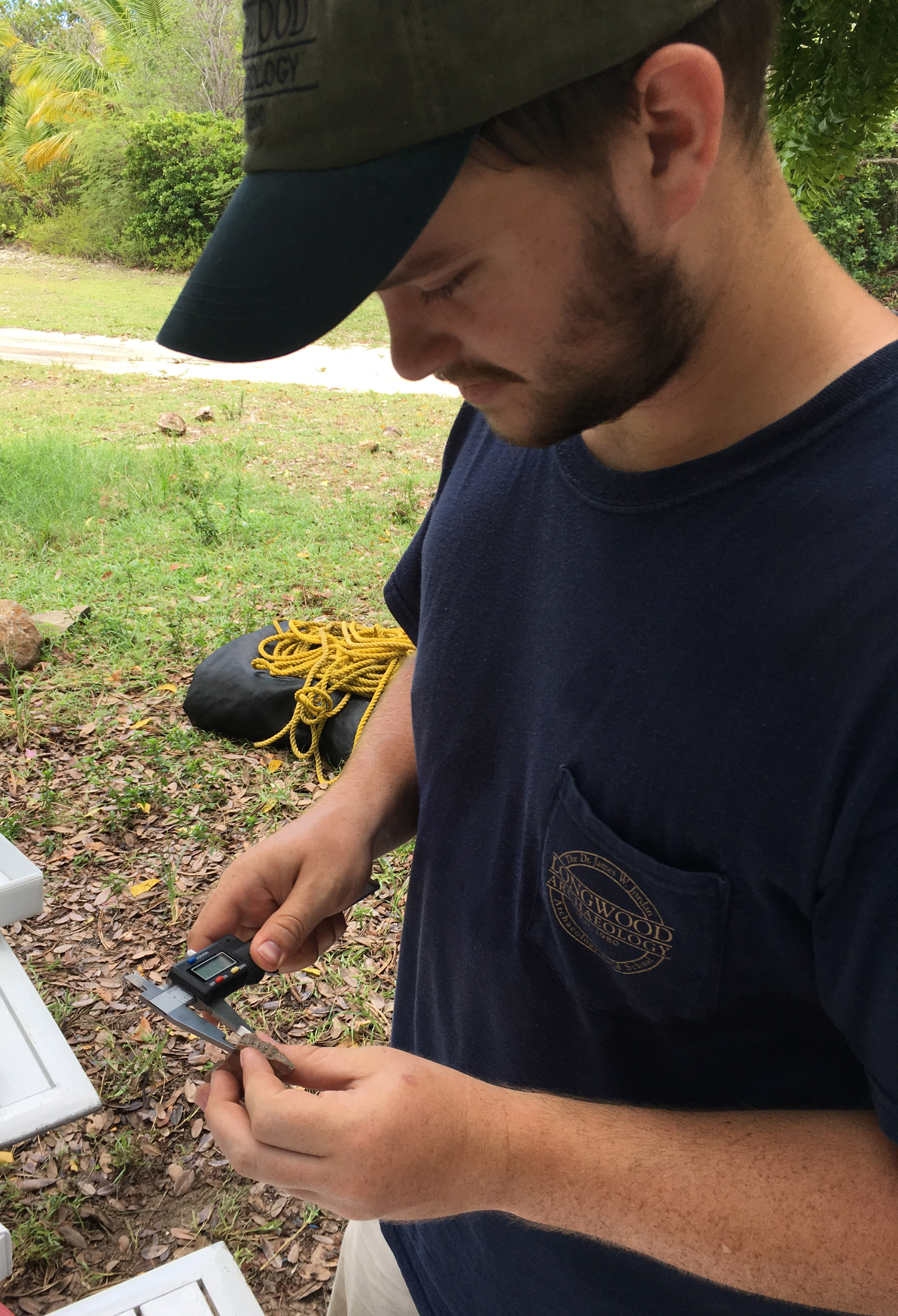
Research doesn’t always take place in a laboratory reeking of formaldehyde or a dusty room in a library. Sometimes the backdrop is clear blue waters and palm trees.
Jordan Wilson ’18 recently spent a month on Guana Island, just off the northern coast of Tortola in the British Virgin Islands, sharpening his skills in pre-Columbian ceramics. His work was done during a visit by Longwood’s Institute of Archaeology in which staff archaeologists and students evaluated and conducted additional fieldwork based upon a preliminary survey in January 2016.
In his project in the Summer Undergraduate Research and Inquiry (SURI) program, Wilson helped dig a 4-meter by 6-meter excavation unit in an area that was identified during last year’s work as having potential to yield significant information. Two ceramic pots—one completely intact, the other about 75 percent intact—and 1,600 shards of ceramics were found this summer. Wilson’s project also involved studying Longwood’s collection of pre-Columbian ceramics, before going to Guana, and doing a literature review of current research on such artifacts in the Caribbean.
“I had never studied ceramics, so I had to get out of my comfort zone and learn something new,” said the anthropology major from Powhatan. “I like to work with lithics—rock and stone artifacts such as arrowheads and spear points—but I’m glad I did this, which was interesting stuff. Now I have more complete information on ceramics.”
Through the earlier work on Guana, in which shovel test pits were dug in two locations, the site was known to have dated from the so-called ceramic period, 500 B.C. to 1500, probably the second half of that period, said Dr. Brian Bates, the Institute’s executive director and professor of anthropology.
“Jordan’s project was intended to develop his proficiency in late pre-Columbian artifacts. The advantage of the SURI program is that students can roll up their sleeves and get into real research,” said Bates.
Wilson, one of six students who went to Guana this summer, also participated in the earlier excavation on the privately owned 850-acre island. The work was requested by the island’s owners, Dr. Henry Jarecki and his wife, who are “interested in the island’s prehistoric occupation and have been very supportive of scientific research for 40 years,” said Bates.
The Dr. James W. Jordan Longwood Archaeology Field School, directed by Bates, has done work in the British Virgin Islands—Tortola and Jost Van Dyke—since 1996, including a stretch of 11 consecutive years. Longwood’s study collection of pre-Columbian ceramics was acquired through this work, which began as part of Bates’ dissertation.
Wilson, who will complete his coursework in December, plans to attend graduate school and pursue a career in archaeology or some other field of anthropology.
“My SURI project was a rewarding experience. I never thought that when I went to college I’d get to do something like this,” he said. “Guana is beautiful. It’s what you think of when you think of a tropical island.”


Leave a Comment